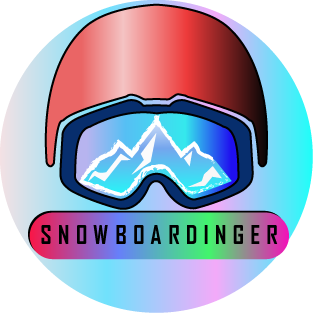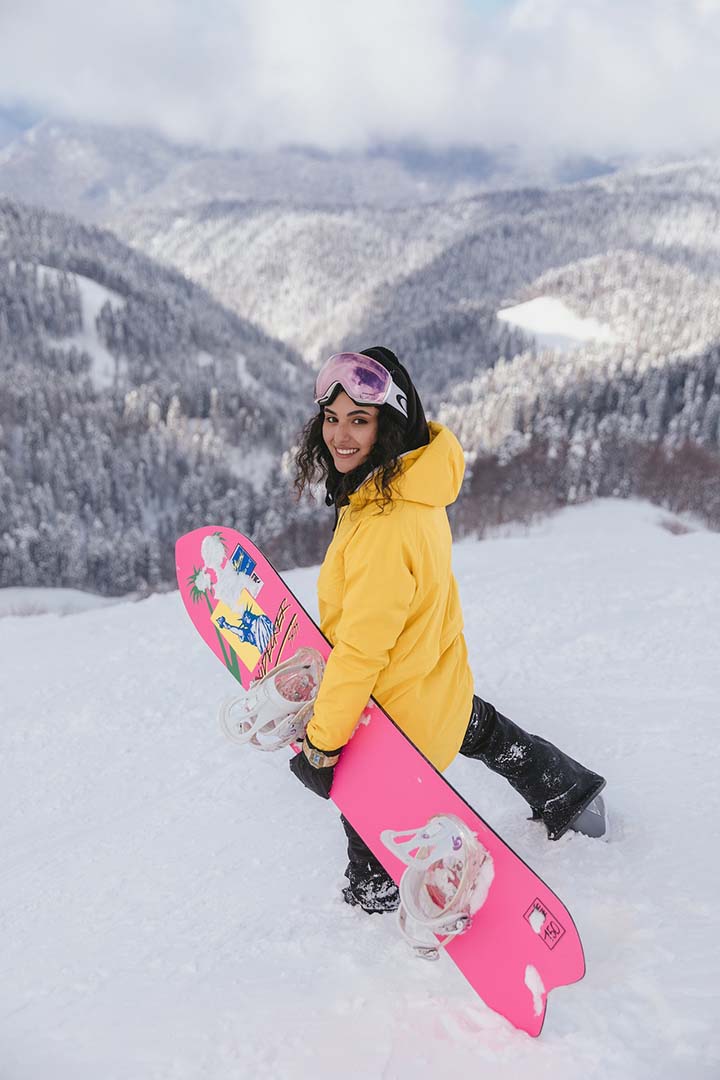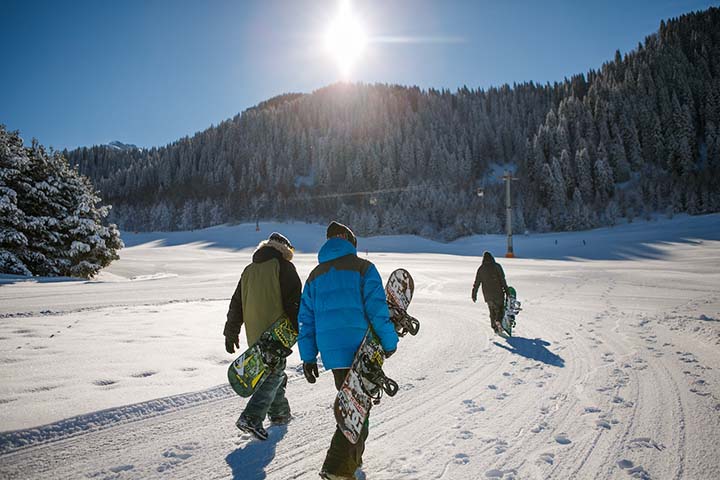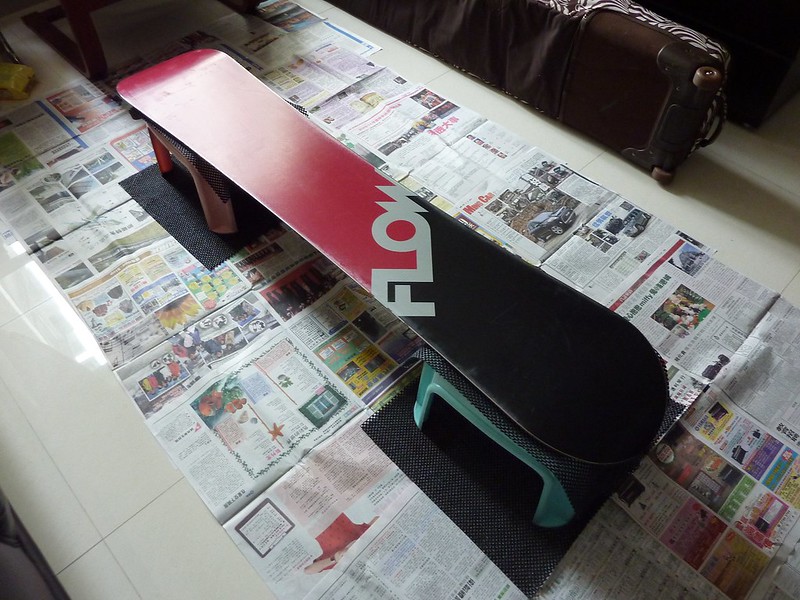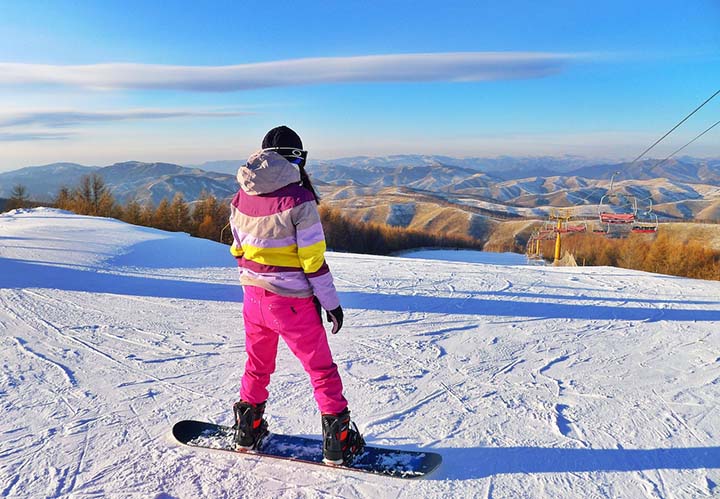Used snowboard gear can save you a lot of money when compared to buying new gear. The cost of snowboard gear can vary greatly depending on factors such as the type of gear you need, the brand, and the level of quality. For example, a beginner-level snowboard and binding setup can range from $300 to $500, while a high-end setup for an experienced rider could cost upwards of $1000 or more.
In addition to the cost of the snowboard and bindings, there are other pieces of gear that are necessary for snowboarding such as boots, helmets, gloves, and outerwear. A basic helmet can cost between $50 and $100, while high-end helmets can cost upwards of $200. Gloves can range from $20 to $100 or more, while a quality pair of snowboarding boots can cost between $200 and $400. Outerwear, such as jackets and pants, can also range greatly in price, with basic options costing around $100 to $200 and high-end options costing over $500.
It is important to keep in mind that while high-end gear may have more features and better performance, it is not always necessary for beginner snowboarders. In many cases, intermediate or advanced-level gear can still provide a great experience for someone just starting out.
Ultimately, the cost of snowboarding gear should not deter you from enjoying the sport. There are many affordable options available, and you can always look for used snowboard gear or seasonal sales to save money.
Table of Contents
There are several benefits of buying used snowboarding gear, including:
Cost savings: One of the biggest advantages of buying used snowboard gear is the cost savings. Snowboarding gear can be quite expensive, especially if you are buying brand new equipment. By purchasing used gear, you can save a significant amount of money while still getting the gear you need.
Reduced waste: Buying used snowboard gear also helps reduce waste and the environmental impact of producing new gear. When you buy used gear, you are giving it a new life and helping to keep it out of landfills.
Quality gear: Another advantage of buying used snowboard gear is that you can often find the high-quality gear that has been well-maintained by its previous owner. For example, a used snowboard may have been professionally tuned and maintained, making it a great value for its price.
Try before you buy: Buying used snowboard gear can also be a good way to test out different brands and styles of equipment before making a more significant investment in new gear.
Example: A beginner snowboarder may want to try out the sport before investing in a brand new snowboard and bindings. By purchasing used snowboard gear, they can get a feel for snowboarding and determine what type of equipment they prefer before making a more significant investment.
Inspecting the gear before purchasing is important for several reasons:
Ensure gear quality: By inspecting used snowboard gear, you can ensure that it is in good condition and suitable for your needs. This is especially important when buying used gear, as it may have signs of wear and tear or damage that may impact its performance.
Avoid hidden issues: By inspecting the gear, you can identify any hidden issues that may not be immediately apparent, such as cracks in the board or broken buckles on bindings. This can save you from purchasing gear that is unsafe or unreliable.
Get a fair price: By thoroughly inspecting the gear, you can also get a better understanding of its value and make sure you are paying a fair price for it. This is particularly important when buying used gear, as prices can vary depending on the condition of the gear.
Ensure compatibility: By inspecting the gear, you can also ensure that it is compatible with your boots, bindings, and other equipment. This is critical for ensuring a safe and enjoyable snowboarding experience.
In conclusion, inspecting the gear before purchasing is an essential step in making sure you are getting the right gear for your needs and that it is in good condition. It can help you avoid hidden issues, get a fair price, and ensure compatibility, which will ultimately result in a safer and more enjoyable snowboarding experience.
Board Inspection
Board inspection is an important step when buying used snowboarding gear. A snowboard is the foundation of your equipment and plays a crucial role in your riding experience, so it’s essential to inspect it carefully before making a purchase. Here’s what to look out for when inspecting a snowboard:
Check for cracks and damages: Start by looking at the board for any visible cracks, chips, or damages. Check the topsheet, the base, and the edges for any signs of damage. These types of issues can affect the performance of the board and compromise its safety.
Check the flex and edge of the board: Flex is an important factor in the performance of a snowboard and can vary depending on the type of riding you plan to do. To check the flex of a board, apply pressure to the center and see how much the board bends. Make sure the flex is consistent throughout the board and that there are no spots that are overly flexible or stiff. Check the edges of the board for any cracks or chips, as these can affect the board’s grip and control.
Look for signs of excessive wear and tear: Check the board for any signs of excessive wear and tear, such as deep scratches, gouges, or dents. These types of issues can indicate that the board has been used extensively or that it has been ridden in conditions that were beyond its capabilities. It is also a good idea to inspect the base for any signs of delamination, which is when the layers of the board separate from one another.
Read Important Things To Know Before Buying Used Snowboards, Click Here
Check the bindings and mounting hardware: If the board is still mounted with bindings, inspect them and the mounting hardware to make sure they are in good condition. Make sure the bindings are securely attached to the board and that there are no signs of damage or wear and tear. Check the screws, washers, and other hardware to ensure they are tight and secure.
Test the board: If possible, test the board by taking it for a ride. This will give you a better understanding of how it performs and whether there are any issues with the board that may not be immediately apparent. Make sure to test the board in conditions that are similar to the type of riding you plan to do.
In short, when inspecting a snowboard, it’s important to check for cracks and damages, inspect the flex and edge, look for signs of excessive wear and tear, check the bindings and mounting hardware, and test the board if possible. These steps will help ensure that you are purchasing a snowboard that is in good condition and suitable for your needs. By taking the time to thoroughly inspect a snowboard before purchasing, you can ensure that you get the right board for your needs and that it is in good condition, which will ultimately result in a safer and more enjoyable riding experience.
Binding Inspection
Binding inspection is an important step when buying used snowboard gear. Bindings play a critical role in the performance and safety of your snowboarding equipment, so it’s essential to inspect them carefully before making a purchase. Here’s what to look out for when inspecting bindings:
Check for signs of damage or wear and tear: Start by inspecting the bindings for any signs of damage or wear and tear, such as cracks, chips, or dents. Check the high-stress areas, such as the buckles, straps, and highbacks, for any signs of damage. These types of issues can affect the performance and safety of the bindings.
Check the straps and buckles: Make sure the straps are in good condition and that they adjust properly. Check the buckles to make sure they work smoothly and that they are not broken or damaged. Make sure the straps and buckles are tight and secure, as loose straps can affect the performance of the bindings and compromise your safety.
Check the highback: The highback is the part of the bindings that extends up the back of your boots and provides support and control. Inspect the highback for any signs of damage or wear and tear, and make sure it is straight and not bent. Check the highback’s ability to flex, as this can affect the performance of the bindings.
Check the mounting hardware: If the bindings are still mounted on the board, inspect the mounting hardware to make sure it is in good condition. Make sure the screws, washers, and other hardware are tight and secure. Check the mounting plate and discs for any signs of damage or wear and tear, as these can affect the bindings’ performance and safety.
Test the bindings: If possible, test the bindings by taking them for a ride. This will give you a better understanding of how they perform and whether there are any issues with the bindings that may not be immediately apparent. Make sure to test the bindings in conditions that are similar to the type of riding you plan to do.
So, when inspecting bindings, it’s important to check for signs of damage or wear and tear, inspect the straps and buckles, check the highback, check the mounting hardware, and test the bindings if possible. These steps will help ensure that you are purchasing bindings that are in good condition and suitable for your needs. By taking the time to thoroughly inspect bindings before purchasing, you can ensure that you get the right bindings for your needs and that they are in good condition, which will ultimately result in a safer and more enjoyable riding experience.
Inspecting Snowboarding Boots
Inspecting snowboarding boots before purchasing them is crucial, as boots play a vital role in the performance and comfort of your snowboarding gear. Here are the key points to keep in mind when inspecting used snowboarding boots:
Check the condition of the outer material: Look for any signs of damage, such as rips, tears, or holes in the outer material. This can affect the durability and protection of the boots.
Check the insulation: Make sure the insulation is still intact and that there are no holes or other signs of damage. If the boots have a removable liner, take it out and inspect it for any signs of wear or damage.
Check the laces: Make sure the laces are in good condition and that they work smoothly. Check for any fraying or other signs of wear and tear.
Check the soles: Make sure the soles are in good condition and that they are not worn down. Check for any cracks or other signs of damage.
Check the fit: Put on the boots and make sure they fit properly. Walk around in them and check for any discomfort or pressure points. Make sure the boots are not too tight or too loose, as this can affect the comfort and performance of the boots.
Check the flex: Test the boots’ flex by bending them in different directions. The flex should be consistent and not too stiff or too soft. A good flex will provide the right amount of support and control for your riding style.
Check the compatibility with bindings: If possible, check that the boots are compatible with the bindings you plan to use. Some boots are designed to work with specific bindings, so it’s important to make sure they are compatible before purchasing.
When inspecting snowboarding boots, keep in mind that they are important part of used snowboard gear, it’s important to check the condition of the outer material, the insulation, the laces, the soles, the fit, the flex, and the compatibility with bindings. By taking the time to thoroughly inspect the boots before purchasing, you can ensure that you get the right boots for your needs and that they are in good condition, which will ultimately result in a safer and more enjoyable riding experience.
Inspecting Protective Gear

Protective gear is the most important part of used snowboard gear, Inspecting protective gear before purchasing it is crucial, as this gear can help protect you in the event of a fall or collision while snowboarding. Here are the key points to keep in mind when inspecting used protective gear:
Check for signs of damage: Look for any signs of damage, such as rips, tears, or holes in the gear. This can affect the gear’s ability to protect you in the event of an impact.
Check for proper fit: Make sure the gear fits properly and comfortably. This is especially important for helmets, as a poorly fitting helmet can provide less protection and be more likely to come off in an impact.
Check the straps: Make sure the straps on the gear are in good condition and that they work smoothly. Check for any fraying or other signs of wear and tear.
Check the padding: Make sure the padding is still intact and that there are no holes or other signs of damage. Check that the padding is still soft and not too hard, as this can affect the gear’s ability to absorb impacts.
Check the functionality: Make sure the gear functions properly. For example, check that the goggles are fog-free and that the lens is in good condition. Check that the zippers on jackets and pants work smoothly and that the snap buttons are not missing or damaged.
Check the expiration date: Some protective gear, such as helmets, have an expiration date. Make sure the gear you are purchasing is not expired, as the expired gear may not provide the same level of protection.
Once again, protective gear is an important part of used snowboard gear, and when inspecting protective gear, it’s important to check for signs of damage, proper fit, the straps, the padding, the functionality, and the expiration date. By taking the time to thoroughly inspect protective gear before purchasing, you can ensure that you are getting gear that is in good condition and suitable for your needs, which will ultimately result in a safer and more enjoyable riding experience.
Amount of Money You Can Save By Buying Used Snowboard Gear
The amount of money you can save by buying used snowboard gear depends on a variety of factors, including the brand, condition, and age of the gear, as well as the retail price of new gear. On average, you can expect to save anywhere from 20% to 50% or more by buying used gear, compared to buying new gear.
For example, if you were to purchase a new snowboard for $500, you might be able to find a used snowboard in good condition for around $300 to $400. Similarly, if you were to purchase new snowboarding boots for $300, you might be able to find a used pair in good condition for around $200.
It’s important to note that the savings you can achieve by buying used snowboard gear can vary greatly based on the gear’s condition and age, as well as the location and availability of the gear. Some used gear may be in excellent condition and nearly as good as new, while other gear may be significantly worn and in need of repair.
So, while there is no exact answer to the amount of money you can save by buying used snowboard gear, it’s possible to save anywhere from 20% to 50% or more compared to buying new gear. By taking the time to inspect the gear carefully before purchasing, you can ensure that you are getting gear that is in good condition and suitable for your needs, which will ultimately result in a good value for your money.
Where to buy Used Snowboard Gear
You can buy used snowboarding gear at various places including:
- Second-hand sports shops
- Online marketplaces like eBay, Craigslist, and Facebook Marketplace
- Snowboarding gear consignment shops
- Sporting goods stores that offer trade-ins or used gear for sale
- Online communities dedicated to buying and selling used gear, such as gear swap pages on forums or Facebook groups.
Before buying used snowboard gear, it is important to consider the following factors:
- Condition: Check for signs of wear and tear, such as cracks, dents, and rust.
- Compatibility: Make sure the gear fits your size and skill level.
- Price: Compare prices with new gear to ensure you are getting a fair deal.
- Return policy: Make sure there is a return policy in case the gear is not what you expected.
- Reputation: Check the seller’s reputation and read reviews to make sure they have a good track record of selling high-quality used gear.
- It is also crucial to thoroughly inspect used snowboard gear before purchasing it, paying close attention to the condition of the bindings, boots, board, and other components. This will ensure that you are getting gear that is safe and in good working condition.
In conclusion, buying used snowboard gear can be a cost-effective way to get the gear you need. Just make sure to do your research, inspect the gear thoroughly, and choose a reputable seller. With a little bit of caution, you can find the high-quality used gear that will provide many seasons of fun on the slopes.
